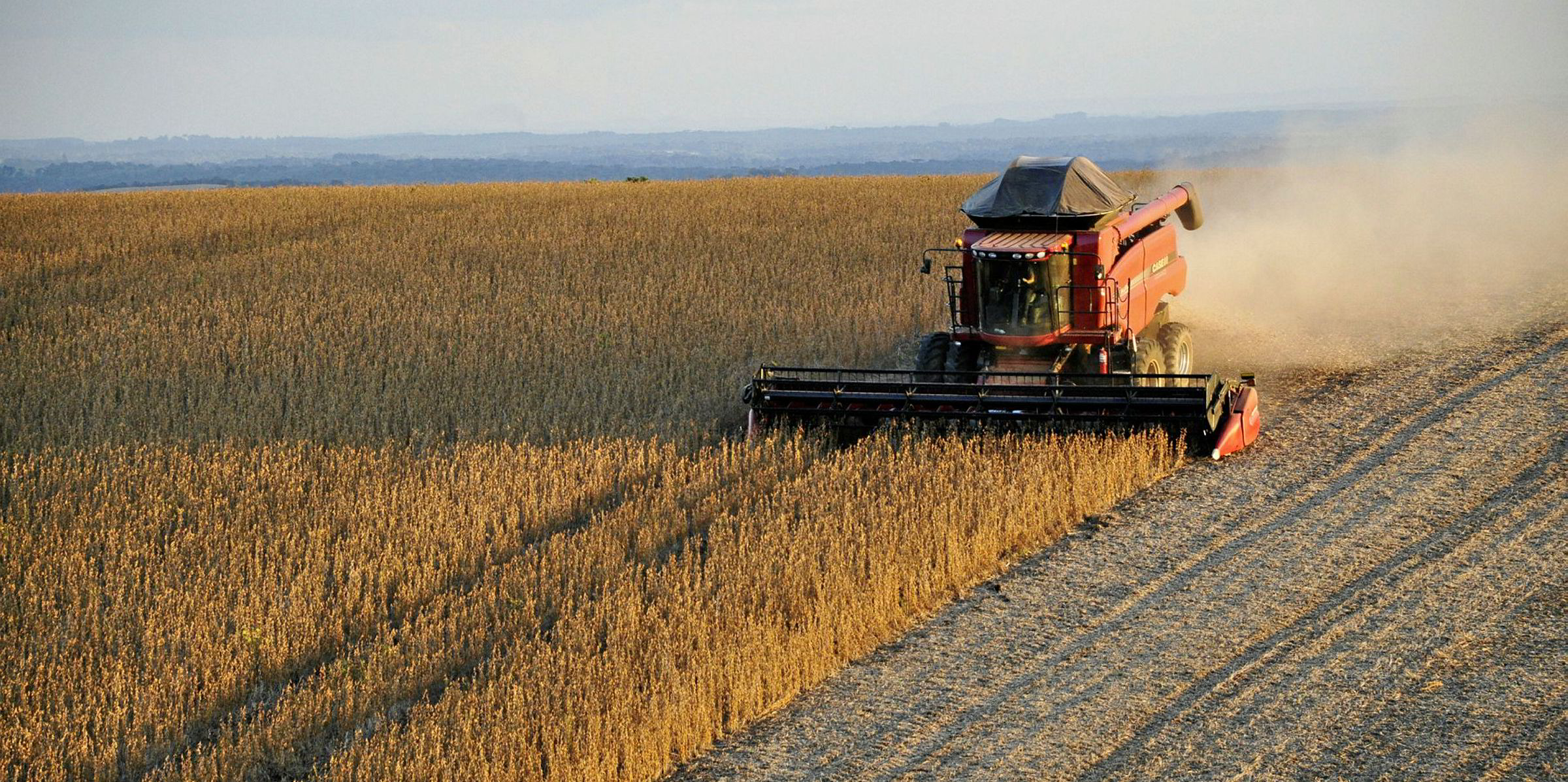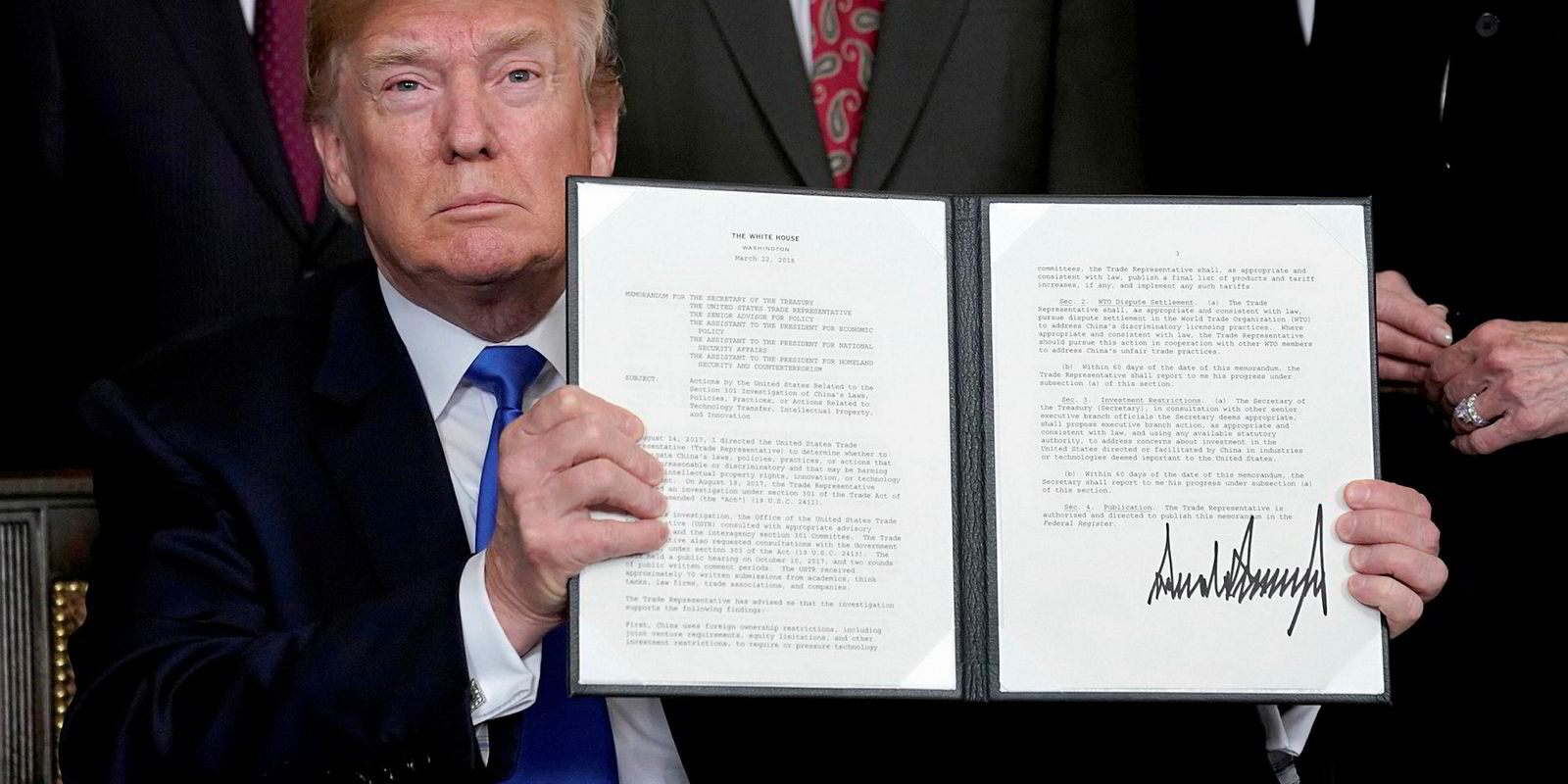Worsening China-US relations and a smaller US crop have raised fears that the trade in soybeans between the two nations might never fully recover.
This negativity has been priced into new deals with forward freight agreement rates for panamax bulkers at below $10,000 per day for 2020 and falling under $9,000 for 2021 onwards.
That is sharply down from today’s peaks, which are not far from the year high of $17,597 per day.
The figures paint a grim picture for panamaxes and reflect what Golden Ocean Management chief executive Birgitte Ringstad Vartdal conceded is the significant effect of the US-China trade war on US grain exports.
Swine flu
The trade is suffering because thousands of animals are being killed in China to tackle swine flu, so less soybean feed is being imported from South America and the US.
Despite that, total export volumes remain healthy, Vartdal said.
This is largely because other nations are stepping in to take up the slack.
“Brazil has compensated for most of the shortfall in US exports,” Vartdal said during an earnings call.
“And we saw that the Chinese came back in the market and immediately bought more soybean from East Coast South America, once the US announced increased tariffs.”
“From a shipping perspective, exports from Brazil or exports from the US are more or less similar in terms of days.”
China remains the largest importer of US soybeans, although its lead has shrunk considerably, according to figures from Bimco’s chief shipping analyst Peter Sand.
China imported 8.6m tonnes from the US in the 10 months to June, compared to second-placed Mexico’s 4m tonnes.
This is a significant decline from the previous corresponding period, when the US sent 25m more tonnes of soybeans to China than it did to Mexico.

Lost cargoes
Sand estimates that the equivalent of 251 panamax loads of soybean exports to China have been lost in the first 10 months of the 2018/2019 marketing year.
The next soy export season begins next month, but Sand deemed it “unlikely to signal a return to what farmers and shipowners have known in years before the trade war”.
He says the US is producing a smaller crop due to poor weather, as well as farmers being hesitant to plant soybeans without assurances that they would be bought by China.
And the large-scale culling of pigs in China in response to African swine fever will markedly reduce the country's demand for soybeans for years to come, he said.
With a worsening relationship between the US and China, this trade is unlikely to return to previous levels any time soon, if it ever does
Peter Sand
“With a worsening relationship between the US and China, this trade is unlikely to return to previous levels any time soon, if it ever does,” Sand said.
Maritime Strategies International agrees with the gloomy forecast, predicting that panamax rates could drop to $12,200 per day in October and $8,700 per day in January.
It attributes the decline to lower seasonal support for vessel earnings from the soybean trade, coupled with slowing Chinese coal imports.
Sand argued that shipowners had become accustomed to high soybean volumes being shipped during the final four months of the year, but growth this year has failed to make up for lost volumes.
“The trade war had an extremely negative impact, and, unless there is a relief, volumes from the second harvest season may be lost,” Vartdal said.
For the moment, all bets for next year appear to be off — with a strong panamax spot market contrasting with depressed future predictions.
“The spreads between the current spot rates and the calendar 2020 is now huge,” Vartdal said.
“So, at the moment, we will play with [the] spot market mainly, and wait until we potentially see an adjustment in the forward curve before we add coverage at the further end of the curve.”






